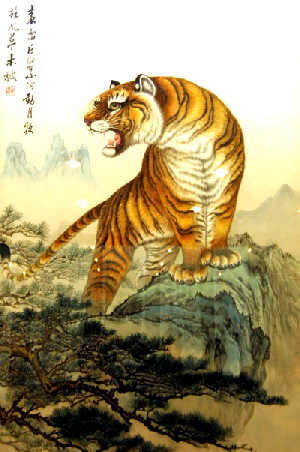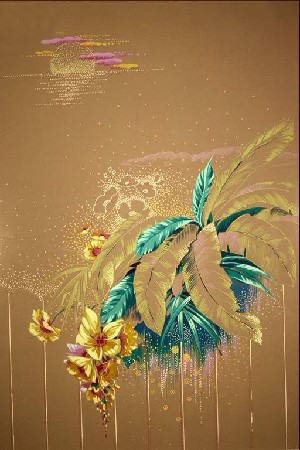
Xiang embroidery
Xiang embroidery was initiated in the Chu Kingdom of the Warring States Period. It had become the main craft in places around Changsha, capital city of Hunan Province, in the Qing Dynasty Xiang embroidery was developed from Hunan folk embroidery methods, but it also drew on the skills of Su embroidery and Yue embroidery. Xiang embroidery products use loose colorful threads to embroider the pattern and the stitches are not as neat as those of other embroidery styles. The various colored threads are mixed together, showing a gradual change in color with a rich and harmonious tone.
Designs on Xiang embroidery mostly derive from traditional Chinese paintings of landscapes, human figures, flowers, birds and animals. The most common designs on Xiang embroidery are lions and tigers. The tigers appear strong and bold, revealing their power and menace as a king of animals. Xiang embroidery won the best award in the Torino World Fair in Italy in 1912 and the First Award in the Panama World Fair in 1933. Xiang embroidery is known abroad as the ideal embroidery.

Yue embroidery
